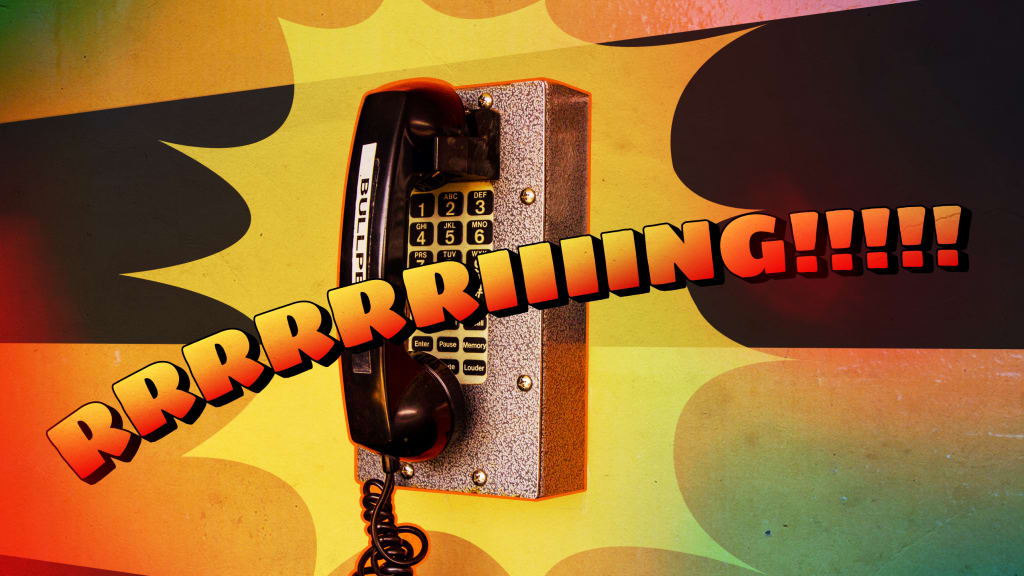
A version of this story originally ran in April 2020.
Baseball is a game filled with bizarre, complex little gadgets. Baseball uniforms involve buttons and a belt, as if the players might need to attend a board meeting after the game. Players fiddle endlessly with their equipment -- adjusting helmets, gloves and shinguards as they step to the plate.
But perhaps the most visible one -- which has become so ingrained that we mention it multiple times every game without ever questioning it -- might just be the oddest: The bullpen phone.
Companies routinely sponsor the Call to the Bullpen for every televised game like it was a rite written into its very rules.
But when you stop to think about it, it quickly becomes absurd. Every other sport has substitutions and discussions between players and coaches without the need for a special telephone. Baseball has more secret hand signals than a meeting of the Illuminati, but none for telling a pitcher to warm up.
Even stranger, when a new pitcher is brought in, the manager uses a hand signal -- and if he uses the wrong arm, he's out of luck and stuck with the pitcher he didn't want.
So, where did the bullpen phone come from? That's a question we'd like to answer but, unfortunately, it may be impossible.
Like with so many parts of history (including the bullpen cart) when new technology was first introduced, no one was all that interested in cataloging it. One day they weren’t there, the next they were and no one really cared either way.
Baseball's earliest days required no phone and barely any bullpen. If you’ve ever interacted with "Old Hoss Radbourn" on Twitter, you know that pitchers back then rarely left the game.
The first usage of the word bullpen didn’t even appear until 1915 -- though in 1905 the New York Giants were the first to build one that wasn’t simply a roped-off section near the fans. Before then, the skipper could just grab the next guy on the bench, or yell to the outfield.
Of course, even then, ballplayers still liked to hang out in the clubhouse to grab a snack, stretch out, and goof around beyond the watchful gaze of their manager. So, in 1908 or '09, the Red Sox installed the first proto-bullpen phone.
Peter J. Morris, who wrote the essential “A Game of Inches,” discovered that manager Fred Lake hooked a bell up to a battery that he would ring from a button in the dugout. Like baseball's Paul Revere, one buzz meant get warm, two meant work hard and three buzzes meant it was time to come into the game.
But any other technological advancements beyond that were either ineffective or weren't inspiring enough to note. The world of electronic relief pitcher communication remained silent until July 25, 1930 when -- for the first time -- the bullpen phone is mentioned. Not surprisingly given the amount of cash they were able to generate, it was housed in Yankee Stadium.
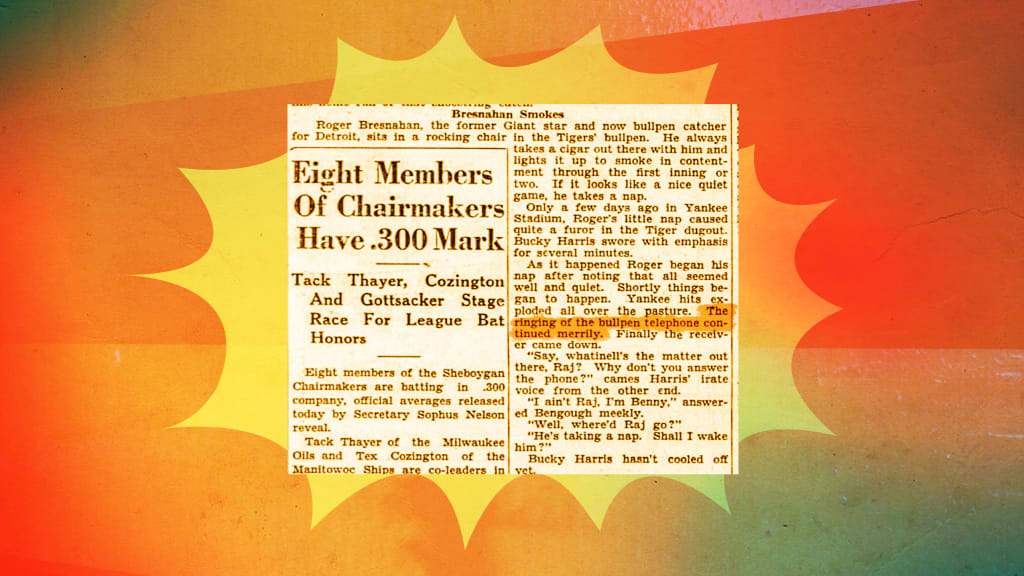
Shockingly, the first reference has absolutely nothing to do with the invention. Rather it's about Detroit Tigers bullpen catcher Roger Bresnahan falling asleep and not hearing the phone ring.
After falling asleep for his customary early game nap, “Yankee hits exploded all over the pasture,” Claire Burcky wrote for The Sheboygan Press, while "the ringing of the bullpen telephone continued merrily.”
Somehow, between whenever the Yankees installed the device and when this story was published, the phone just became another accepted part of the game. But as for that date and why? That answer still eludes us.
Twelve years later, the Yankees were still the only team with a bullpen phone -- though support was growing among players for teams to install them.
Hugh Casey, then a reliever for the Brooklyn Dodgers, wished someone "would do something about persuading owners to put phones in the bullpens.”
“Why don’t they have a phone, so they can tell us what’s going on?” Casey asked. “Sometimes we can guess. We see a pitcher in a jam. And [Dodgers manager] Chuck Dressen signals for one of us to warm up. Wagging his left hand means [Larry] French. Right hand over head means someone else; and side-arm means me.”
Only problem? If Casey didn’t manage to see the wave, or misinterpreted something -- as he had done in a game against the Reds earlier that season and needlessly warmed up -- well, then all that work is for “nothing.”
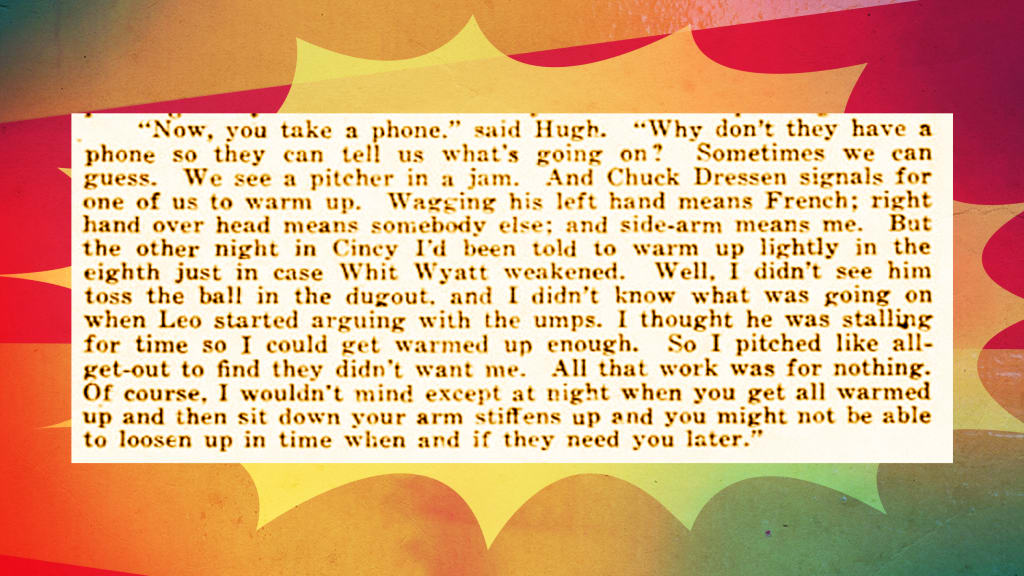
The rest of the league soon caught up -- though, again, we have to guess when the advancements came.
A story about Tigers reliever Kyle Graham and his customary mid-game snack being interrupted by a call on the bullpen phone ran in the Brooklyn Daily Eagle in 1945.
This story is probably apocryphal as Graham's career ended in 1929, but it's proof that the phone was becoming something that writers and fans knew and simply expected to be in the game.
By 1950, the Dodgers had their bullpen phone installed at Ebbets Field-- even if it was too late for Casey, who was released by Brooklyn in 1948.
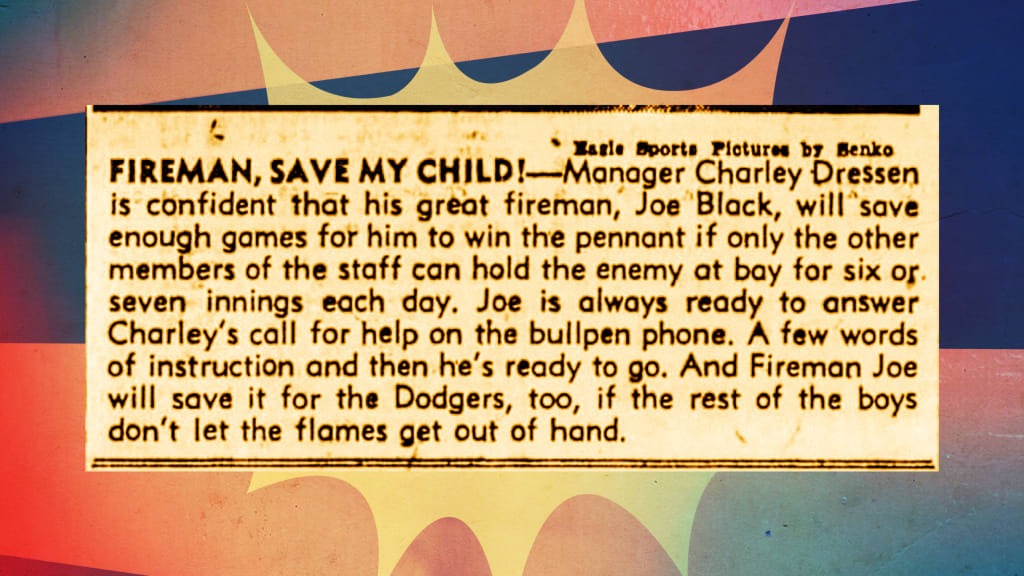
That same year, the White Sox had a bullpen phone in their digs -- as proven by this hilariously goofy triptych of phone-related images.
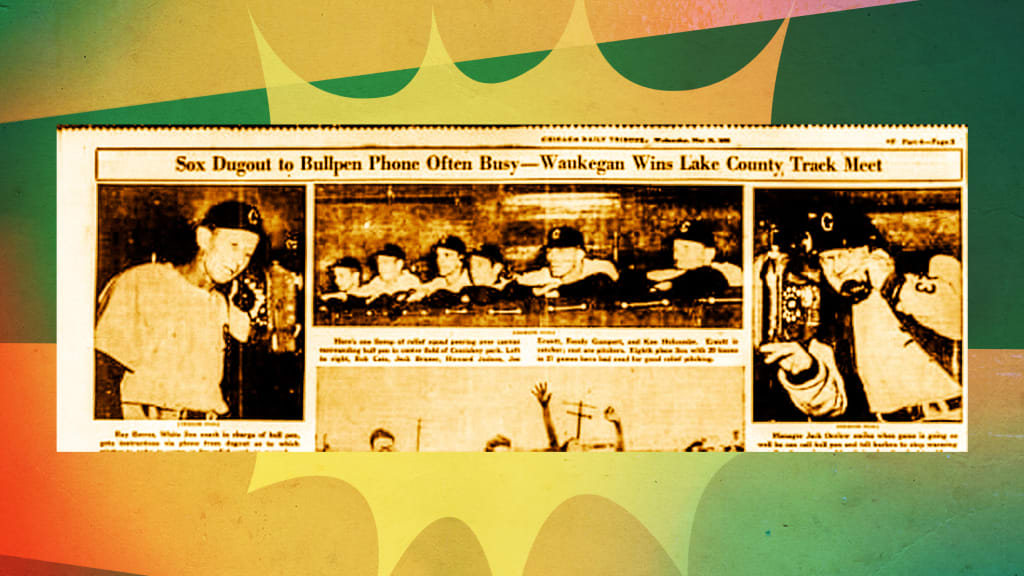
The fact that the photographers were so giddy to show off the device probably means that the installation was relatively new, but again: No one was writing stories and making news of their appearance. They simply either were or were not.
From there, the bullpen phone became an ineffable piece of baseball, and the only time it was worth noting was when it didn’t work. Like when Moe Drabowsky was making prank calls, and his manager would get a busy signal while trying to reach his pitchers.
Naturally, Yogi Berra struggled a little with the phones. While managing the Yankees in 1964, Berra dialed 5-3 to reach the bullpen, but accidentally reached the grill cook in the pressbox. When the skipper told him to "warm up Stafford," the chef told him, "All I got here to warm up is hamburgers. You got the wrong number."
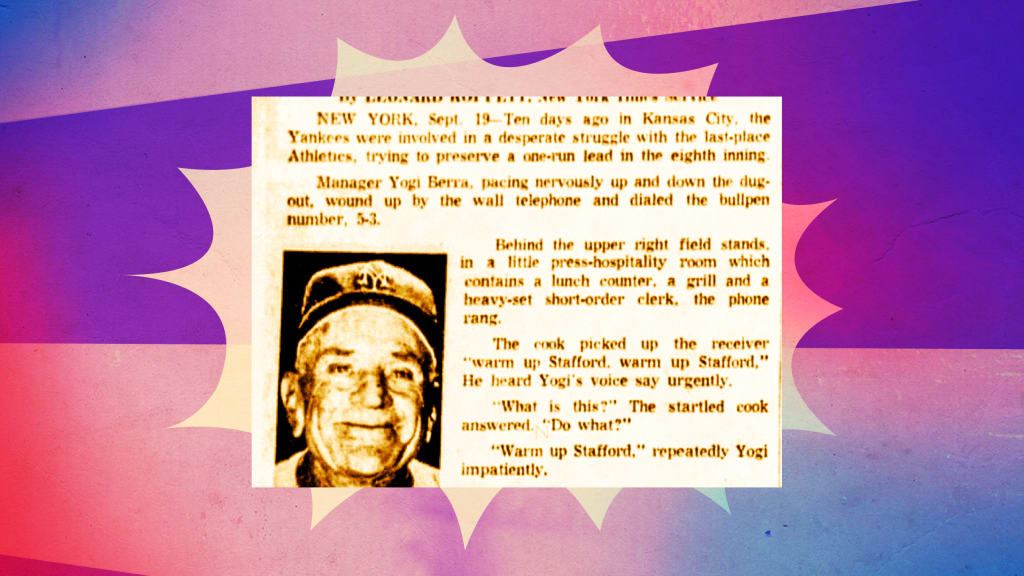
Most of those issues are in the past, with modern devices tracing a direct line from the dugout to the bullpen. Of course, human error can still create some issues.
If someone forgets to hang up, it doesn't matter what device is being used. Trying to communicate the way pre-bullpen phone managers did -- using hand signals and waving flags -- proves those methods are not up to the task.
And, uh, it's not gonna work when this happens either:
While you may think there's not a whole lot of innovation left for phones, though, you'd be wrong. In 2019, Emcom Systems took over Major League Baseball's bullpen phones because the devices kept being damaged and weren't always reliable.
"We discovered that dugouts were hosed down after games and we determined this was causing problems with the older phones," Emcom's CEO Paul Grigg wrote in an email. "Emcom’s solution was a specifically designed combination of a robust and waterproof phone and housing that would make the communication technology more reliable and protect them from the rough usage that these devices sometimes encounter during games."
That wasn't the only addition. They also added a flashing blue light atop the phones, so the team and coaches could see when the phone was ringing even when screaming fans in a loud stadium would have drowned out the sound.
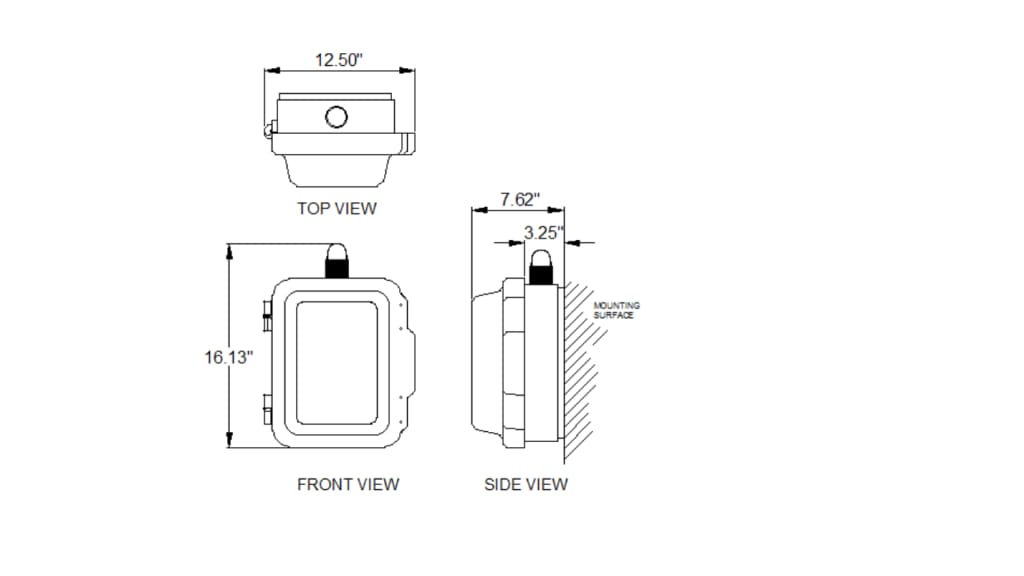
And, for anyone wondering, no you don't need to press any buttons, so there won't be any more calls to the grill cook.
"Calls are placed to bullpens, dugouts, replay booths etc. by simply picking up the phone which automatically and instantly rings its assigned counterpart," Grigg wrote.
We may never know just how the bullpen phone came to be, but based on the type of unrestrained chaos that ensues when something goes wrong, it's clearly one of the most important innovations in baseball history. Maybe one day the inventor will get their due, but until then, that person will be pleased to know their creation is here to stay and very much appreciated.
